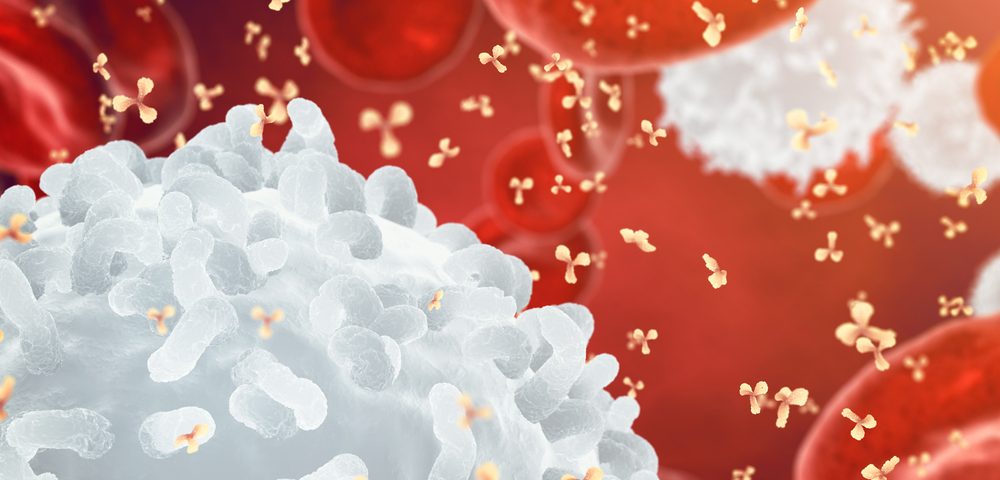High levels of switched memory B-cells (SwM B-cells), a subtype of white blood cells, are associated with oligoarticular and polyarticular juvenile idiopathic arthritis (JIA), according to a recent study.
These cells also appear to be linked to patients’ responses to a therapy called anti-tumor necrosis factor-alpha (anti-TNF) treatment.
Oligoarticular-JIA (o-JIA) and polyarticular-JIA (p-JIA) are two subtypes of juvenile idiopathic arthritis. O-JIA affects four joints or less, whereas inflammation develops in four or more joints in p-JIA patients.
The TNF protein is produced during inflammatory responses with high levels of TNF associated with chronic inflammation conditions, including rheumatoid arthritis.
TNF is also involved in the regulation of B-cells, white blood cells that produce antibodies against pathogens. Abnormalities in the activation process of B-cells can lead to the production of auto-reactive antibodies.
Anti-TNF therapy has improved symptoms in JIA patients that do not respond to methotrexate treatment. But it remains unclear if these responses to treatment are associated with B-cells.
The study, “Switched Memory B Cells Are Increased In Oligoarticular And Polyarticular Juvenile Idiopathic Arthritis And Their Change Over Time Is Related To Response To TNF Inhibitors,” was published in the journal Arthritis & Rheumatology.
Researchers from Italy investigated JIA patients’ B-cell population and its possible association with disease activity and response to treatment.
Data from 109 children, 94 diagnosed with o-JIA and 15 with p-JIA, was analyzed and compared to 304 healthy children. Blood samples taken from the children showed that a specific subtype of B-cells, the switched memory (SwM) B-cells, was significantly increased in JIA patients when compared to healthy children of the same age.
This was even more pronounced in children who developed the condition before they reached the age of 6. There was no difference in the number of SwM B-cells observed between patients with o-JIA and p-JIA.
When researchers analyzed the joint fluid of 18 patients with JIA, they found that SwM B-cells accounted for more than 60% of the overall B-cell population.
In addition, these cells were shown to produce a specific type of auto-reactive antibody called antinuclear antibodies (ANA), suggesting a direct link between this cell subset and the typical autoimmune feature of the disease.
The study also showed that the abnormal increase of SwM B-cells was not reduced in JIA patients under methotrexate treatment, regardless of the presence of active or inactive disease. However, the combination of methotrexate and anti-TNF treatment was able to significantly lower the increase of SwM B-cells in patients who achieved and maintained remission. The same was not seen in patients with active disease.
“In patients responding to treatment, TNF inhibitors are able to correct the expansion in memory B cells observed in JIA patients, making these cells a promising biomarker,” Emiliano Marasco, MD, and Angela Aquilani, MD, first co-authors of the study, said in a press release.
Researchers believe that anti-TNF treatment in patients with active disease is not able to control the disorder either because it cannot efficiently reduce TNF proteins in the tissues or because SwM B-cells do not play a key role in this subset of patients.
The study concluded that further studies are necessary to explain in more detail the role of memory B-cells in JIA development, their correlation with the course of disease, and to validate their usefulness as biomarkers of disease classification and response to treatment.

